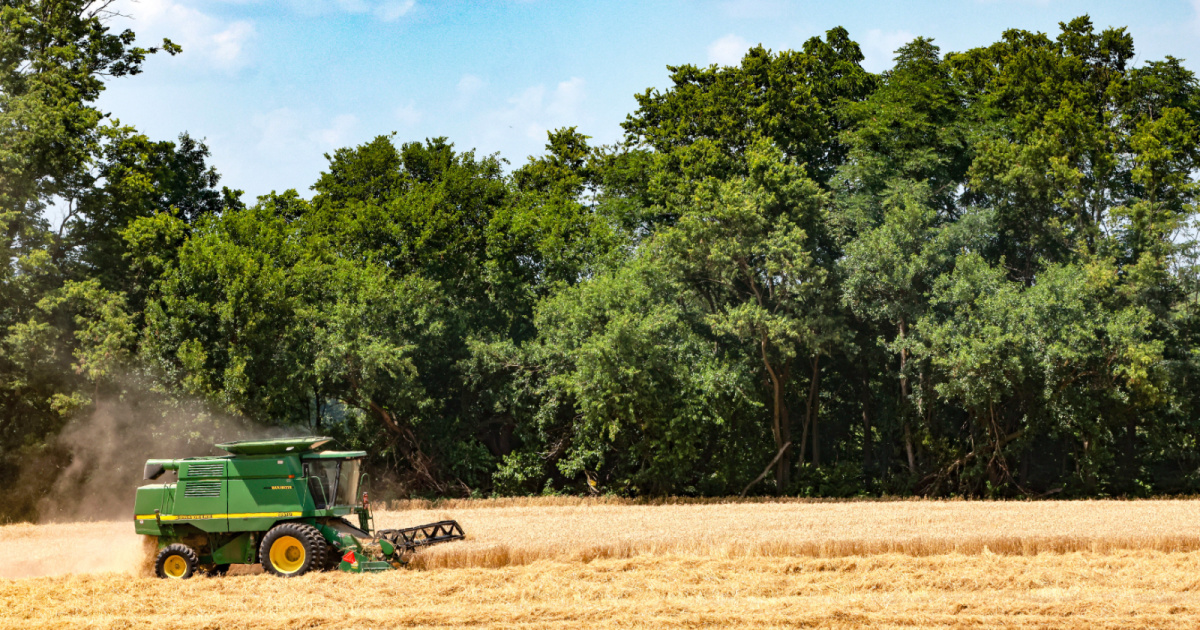Grain Crop Update
Posted on Aug 11, 2025
As of mid-summer, crop conditions are mostly favorable despite the rocky start.
LOUISVILLE, Ky. – Depending on where one lives or how much moisture certain areas received earlier this year, the beginning of the growing season was difficult for most. Deadly storms and historic flooding caused not only great heartache to many, but also extreme difficulties on the farm during the crucial planting season.
As of press time, the average rainfall for the year in Kentucky is 43.77 inches. That is 15.52" above normal for this time of year (155% of normal). That makes it the wettest year on record.
Chad Lee, Director of the Grain and Forage Center of Excellence and Grain Crops Extension Professor at the University of Kentucky's Martin-Gatton College of Agriculture, Food, and Environment, noted that the season has presented its fair share of challenges.
“I think ‘challenging’ is the word that just about every farmer has used when discussing planting corn and soybeans this year, getting wheat harvested, and getting double-crop beans in,” he said.
As of mid to late July, Lee noted that the majority of the state’s corn crop was already at the silking stage.
“Even though we've been very warm during pollination, we've had cooler mornings, and so we're probably pretty good at pollination,” he said. “And we've had adequate water over most of our fields in the state to get us into successful seed set as well.”
Lee noted that adequate rainfall would be needed later in the season to help finish out the crop, but at this point in the season, he is cautiously optimistic, feeling assured about most of Kentucky’s corn crop.
Much of the younger corn was at a point in mid-July of rapid growth due to warmer weather and, luckily, in need of less water.
“I think the biggest surprise is I haven't seen as much sidewall compaction and other mistakes that we often make in wet seasons,” Lee said. “There are some places where sidewall compaction is a real thing, but considering the amount of rainfall that we’ve received, and how disruptive it was to our normal planting cycle, I'm very impressed with how the corn crop looks as a whole.”
Lee emphasized, however, that there are exceptions.
“But if you'd have told me we had this much rain up until June and the crop looks as good as it does right now, I would've been extremely surprised and very pleased,” he said.
Lee said the story for this year’s soybean crop is much the same as corn as of mid-July.
“For the most part, it's the same story, just a second verse relative to corn,” he said. “We had a lot of double-crop beans that went in late for what we normally expect, but we were also quite warm at the end of June and in the early part of July. With those warm temperatures, it's helping those double-crop beans emerge quickly and grow quite rapidly.”
Lee hopes that by the end of August and early September, those double-crop beans have caught up to where they would normally be historically in growth and development. As of this writing, Lee said it’s too early to forecast that, but, overall, crops are looking good as of mid-July.
“We have had a good year up to this point, even when you consider all the headaches and the challenges of getting the crop in and the logistical nightmares that farmers have had to work with,” he said. “All of that considered, we've got crops that look very good, and that gives us some hope that all of this work is going to pay off positively during harvest.”
In looking at the recently harvested wheat crop, Lee said most of the crop was in the field a little longer than desired, mostly because of the wet conditions experienced around harvest time.
“Overall, the crop is a little bit better than we probably expected it to be, in part because of the amount of rain that came in,” he said. “However, when you get rainfall on mature wheat, that's usually a negative for overall wheat quality, and we've got some reports that the quality is off a little bit this year, but still within spec.”
Lee added that he thinks a lot of farmers are still able to sell some high-quality wheat, which is good, but that also means there'll be a few more fields that don't make spec this year. Those fields will sell at a lower price, and that's the last thing producers need in this economic climate right now.
Tagged Post Topics Include: University of Kentucky College of Agriculture Food and Environment, Chad Lee, Grain Crops
Comments